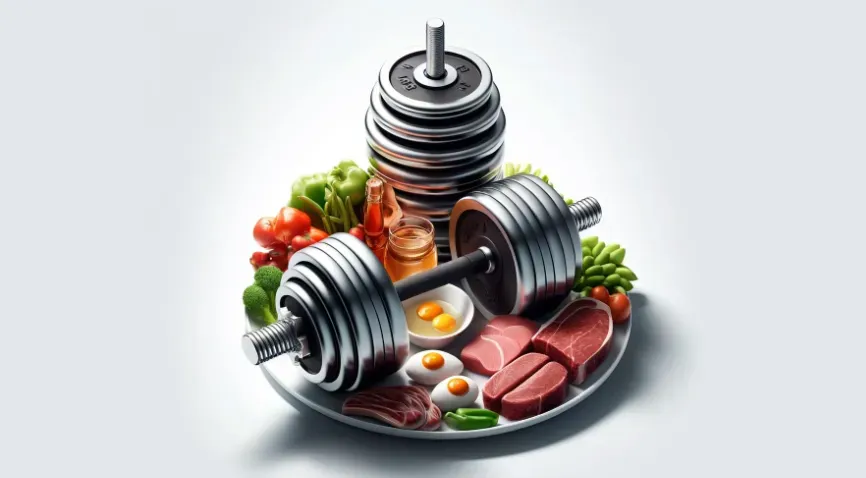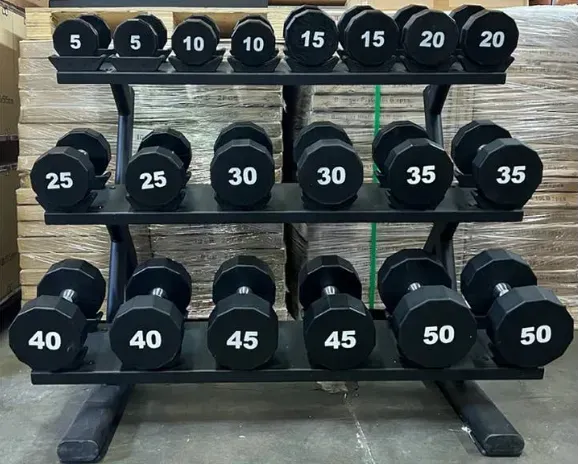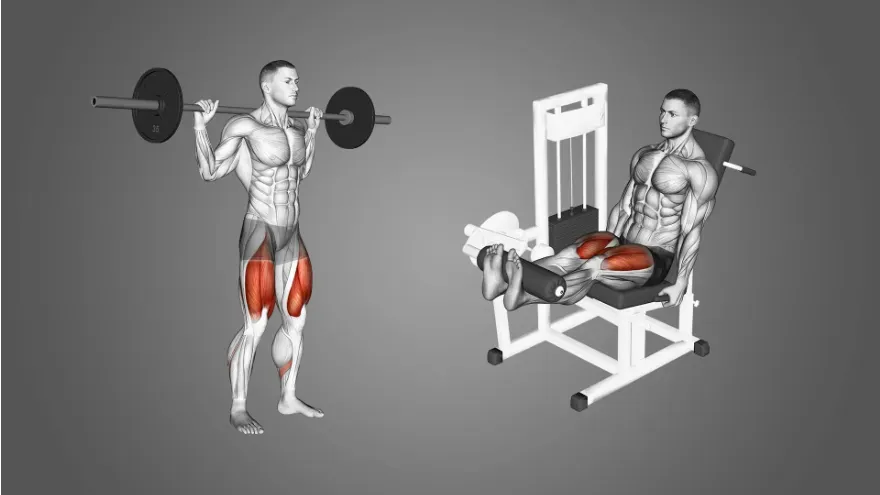Unveil Your Strength - A Step-by-Step Guide to Building Muscle Effectively

Key takeaways
- Muscle building requires a combination of progressive resistance training, adequate protein intake, and thoughtful recovery practices.
- Progressive overload and effort—training close to failure—are critical drivers of muscle hypertrophy over time.
- Optimizing volume and fine-tuning protein intake should be individualized for sustainable muscle growth.
- Compound and isolation exercises each play unique roles; balance and proper execution are key to maximizing results.
- Understanding cellular mechanisms like mTOR activation and mechanical tension provides deeper insight into effective training strategies.
- Advanced concepts such as sarcoplasmic hypertrophy and hormonal influence can enhance long-term muscle development strategies.
Building muscle is a multifaceted journey that entails far more than lifting heavy objects and chowing down on chicken breasts. Throughout my years of experience, I’ve seen firsthand that the formula for developing strength involves a blend of resistance training, nutritional strategy, and understanding the underlying science that fuels muscle growth. In this guide, I will unravel this complexity, layer by layer, to equip you with the knowledge you need to sculpt a stronger, more muscular physique.
Introduction: Unraveling the Mystery of Muscle Growth
Gaining muscle isn't an enigma wrapped in a riddle. It's a science, backed by decades of research and countless success stories. This guide is your roadmap to deciphering the subtle intricacies of muscle growth. We'll explore strategies ranging from foundational principles to advanced tactics that have helped countless individuals, from new lifters to seasoned athletes, achieve their strength goals.
Embarking on a muscle-building journey involves understanding the balance between training stimulus and nutritional support. Through this introductory phase, you will learn how these factors intertwine to create the ideal environment for muscle growth, setting the stage for more nuanced discussions to follow.
Level 1: The Basic Blueprint for Building Muscle

At its core, the process of building muscle is quite straightforward. Imagine your muscles as a workforce ready to remodel your body's structure. To catalyze their efforts, all you truly need is to engage in consistent weightlifting and to nourish your body with adequate protein. This foundational layer sets the stage for all further muscle growth.
Lifting weights acts as a wake-up call to your muscles, sending a clear signal that they need to grow to cope with the load. Protein then provides the amino acids - the building blocks your muscles use to repair and grow stronger. This is akin to equipping your workforce with the necessary tools and materials to get the job done.
Why Lifting Weights and Protein Are Your Starting Blocks
Weightlifting coupled with protein consumption forms the bedrock of muscle building. When you hoist weights, you're not just going through the motions; you’re initiating an adaptive response that motivates your muscles to expand in strength and size. Protein, especially rich in essential amino acids, is like the fuel that powers this growth engine.
Think of it like this: weightlifting is the spark that lights the fire of muscle growth, while protein is the fuel that keeps the flames burning. Just as a car needs gasoline to move, your muscles need protein to grow. It's a symbiotic relationship where one cannot effectively function without the other.
Level 2: Optimizing Your Approach to Training

Evolving your muscle-building approach is about refining your habits and techniques. It's not merely about hefting weights and consuming protein but doing so with a plan that escalates in complexity and efficiency over time. Progression is key here, and that's where progressive overload enters the equation.
As you become stronger, simply lifting the same weights won't cut it. Your muscles crave challenge; they thrive on it. Progressive overload is about steadily increasing your training load, pushing your muscles beyond their comfort zone to encourage continuous growth.
The Role of Progressive Overload in Muscle Development
Progressive overload is the cornerstone of muscle development. It's the principle of gradually increasing the demand on your musculoskeletal system to foster muscle hypertrophy, strength, and endurance. It involves manipulating variables such as weight, repetitions, and sets over time.
Imagine you're climbing a hill. Initially, the slope is gentle, but as you progress, the incline becomes steeper. Similarly, with progressive overload, you systematically make your workouts more challenging. It's not about Herculean leaps in weight or intensity, but more about incremental steps that accumulate over time.
Fine-Tuning Protein Intake for Optimal Muscle Gain
While lifting weights triggers muscle growth, protein is what sustains it. A specific range of protein intake is suggested to optimize muscle gains - around 0.7 to 1 gram of protein per pound of body weight per day. This isn't a one-size-fits-all recommendation, but rather a solid starting point to adjust based on individual needs and body composition.
If your body composition leans towards a higher body fat percentage, calculating protein needs based on body weight may not be as effective. A practical alternative is to use a measure like grams of protein per centimeter of height. This approach ensures that your protein intake is better matched to your body's lean mass rather than total body weight, streamlining your path to muscle gains.
Level 3: Acute Training Variables for Muscle Hypertrophy

Delving deeper, we examine the acute variables that fine-tune your training program. This includes effort, volume, intensity, and exercise selection – each plays a crucial role in driving muscle hypertrophy. It's about understanding how hard to push and how to best structure your workouts for maximal growth.
Knowing how to manipulate these variables can mean the difference between plateauing and reaching new heights in muscle development. It's akin to adjusting the dials on a high-tech machine to get the performance you want - you need to know what each dial does and how turning it affects the outcome.
The Crucial Role of Effort in Your Workouts
Effort is perhaps the most fundamental variable when it comes to muscular growth. Without sufficient effort, the stimulus for muscle adaptation simply isn't strong enough. The current scientific dialogue suggests pushing sets close to failure, but not necessarily to the point of complete exhaustion.
It's a matter of striking a balance between going too easy on yourself and pushing too hard. You want to leave the gym knowing you've challenged your muscles, but not so much that you can't recover effectively. This delicate balance is where true growth happens.
Finding Your Volume Sweet Spot for Growth
When we talk about volume in weight training, we're referring to the total amount of work you do. There's a volume sweet spot for each individual - a point where muscle growth is optimized without overtraining. It's about finding the dose of volume that offers a harmonious blend of challenge and recovery.
The science-backed range suggests 10 to 20 sets per body part per week, but again, this isn't set in stone. Listen to your body, experiment, and adjust accordingly. Too much volume can lead to overtraining, while too little can stall your progress.
Level 4: Compound vs. Isolation Exercises and Training Frequency

Compounds and isolations - the Yin and Yang of exercise selection. Each has its place in a balanced training regimen. Compound exercises provide comprehensive benefits by targeting multiple muscle groups simultaneously, while isolation exercises hone in on specific muscles for focused development.
As for frequency, it’s about how often you engage each muscle group. The latest research shows that training frequency has a relatively minor effect on muscle growth compared to other factors like volume and intensity. However, hitting a muscle at least twice a week can optimize recovery and growth.
The Art of Exercise Selection for Maximized Growth
Choosing the right exercises is both a science and an art form. While compound movements like squats and presses offer a big return on investment, isolation exercises shine for targeted muscle work. Understanding which exercises best suit your body can significantly impact your progress.
It's not just about what exercises you do, but how you do them. Execution is critical; each movement should be performed with precision and control to maximize tension and stimulate growth. It's a dance between the mind and muscle - each step should be deliberate and purposeful.
Frequency Myths Debunked: How Often Should You Train?
Common misconceptions have painted frequency as the be-all and end-all of training. However, it's just one piece of a larger puzzle. Whether you’re hitting each muscle group once a week or multiple times, consistency over time is what truly matters.
Adopting a training split that suits your lifestyle and recovery capability is essential. For some, upper/lower splits or full-body workouts offer great results, while others may prefer a different approach. The key is to find what works for you and to stick with it.
Level 5: Digging Deeper into the Mechanisms of Muscle Growth
To truly master muscle growth, one must delve into the physiological mechanisms behind it. Understanding how muscles grow on a cellular level can inform more effective training strategies. This level explores the primary drivers of hypertrophy, shedding light on why some practices are more effective than others.
At this deeper level, we begin to piece together the intricate puzzle of muscle physiology. The concepts of mechanical tension, muscle damage, and metabolic stress are dissected to uncover their roles in the growth process, providing insights into the biological underpinnings of strength gains.
Mechanical Tension: The Key Driver of Hypertrophy
Mechanical tension remains the primary driver of muscle hypertrophy. Picture a tug-of-war where each side pulls with equal force - tension builds in the rope, similar to the tension created in the muscle fibers during resistance training. It is this force that signals your body to strengthen and enlarge the muscle.
To maximize growth, the goal is to increase intramuscular tension over time. This involves not just moving weight but engaging the target muscle fully, focusing on the mind-muscle connection and ensuring proper form. Like a skilled conductor, you must direct each movement to orchestrate growth.
The Truth About Muscle Damage and Its Impact
Muscle damage - often heralded as a badge of honor - is not the growth driver many believe it to be. While some damage is inevitable in training, recent research suggests that it may not significantly contribute to hypertrophy and could even impede progress if excessive.
Rather than chasing soreness or damage, focus on the tension and quality of your workouts. The belief that pain equals gain is fading, with a shift towards smarter training that prioritizes long-term muscle development without unnecessary wear and tear on the body.
The Physiology Behind the Pump: How Muscle Grows on a Cellular Level
Understanding muscle growth extends beyond the visible pump experienced during a workout. It's about the signaling pathways activated by mechanical tension that cascade to create new muscle proteins. Dive into this cellular world, where the real magic of hypertrophy takes place.
When we lift weights, mechanosensors in our muscles detect tension, setting off a series of biochemical signals. These signals ultimately lead to the activation of the mTOR pathway, which is crucial for initiating muscle protein synthesis. The interplay between training-induced signals and dietary amino acids is at the heart of muscle growth.

Understanding Mechanosensors and the Role of mTOR in Muscle Protein Synthesis
Mechanosensors in our muscles act as the scouts, detecting when the muscle fibers are under tension and signaling pathways that lead to growth. mTOR stands out as a central figure in this process, essentially serving as the switch that turns on protein synthesis within the muscle.
When mTOR is activated, it goes to work, communicating with the DNA in your muscle cells and instructing them to produce messenger RNA. These blueprints guide the ribosomes to construct new proteins, leading to the enlargement of the muscle fibers - the essence of hypertrophy.
The Interplay Between Resistance Training and Dietary Amino Acids
Resistance training provides the signal that kickstarts muscle growth, but it's the amino acids from the protein in our diet that supply the building blocks. The amino acid leucine, in particular, plays a pivotal role by activating mTOR, reinforcing the growth signal initiated by lifting weights.
The synergy between these amino acids and the mechanical tension from resistance training is a dance of physiology that results in muscle growth. It's not just about consuming protein; it's about providing the necessary substrates at the right time to complement the mechanical efforts of training.
Beyond the Basics: Advanced Insights into Muscle Development
Gaining a more nuanced understanding of muscle development involves looking at the role of hormones like testosterone and concepts like sarcoplasmic hypertrophy. These advanced insights can be instrumental in refining your approach and breaking through plateaus for continued progress.
Understanding the full scope of muscle hypertrophy goes beyond the common narratives. By exploring lesser-known factors and how they contribute to the overall picture, we can apply these insights to craft training and nutrition strategies that align more closely with our physiological blueprints.
Testosterone's Role in Muscle Protein Synthesis
Testosterone, the hormone known for its role in developing male characteristics, also plays a part in muscle protein synthesis. While natural fluctuations within the body have a minor effect on muscle growth, the introduction of synthetic testosterone significantly ramps up this process.
This hormone crosses into muscle cells, binding to androgen receptors, and amplifying the signal for muscle growth. Understanding how natural hormone levels influence hypertrophy can inform training and recovery strategies, emphasizing the importance of hormonal health in the quest for muscle growth.
Exploring Sarcoplasmic Hypertrophy and Myonuclear Addition
Sarcoplasmic hypertrophy refers to the increase in the volume of the non-contractile elements within the muscle cells, such as glycogen and fluid. While myofibrillar hypertrophy involves the increase of contractile proteins, sarcoplasmic hypertrophy contributes to overall muscle size without necessarily increasing strength.
The concept of myonuclear addition postulates that satellite cells donate nuclei to muscle fibers, potentially allowing for greater muscle protein production. This theory highlights the complex relationship between muscle fibers and satellite cells, offering intriguing possibilities for enhancing muscle growth through training.
Conclusion: The Ongoing Journey of Understanding Muscle Growth
Understanding muscle growth is an ever-progressing field, with new insights constantly emerging. It's a dynamic and rich area of study that touches not only on how we improve our physique but also on broader medical implications, like combating muscle-wasting diseases.
The pursuit of knowledge in muscle development isn't just for academic curiosity; it can profoundly impact real-world training practices. As we peel back the layers of complexity, we inch closer to the core truths that can revolutionize our approach to building strength and muscle.
